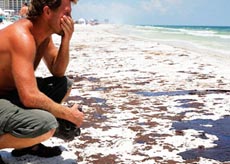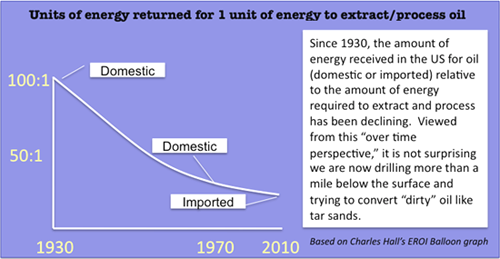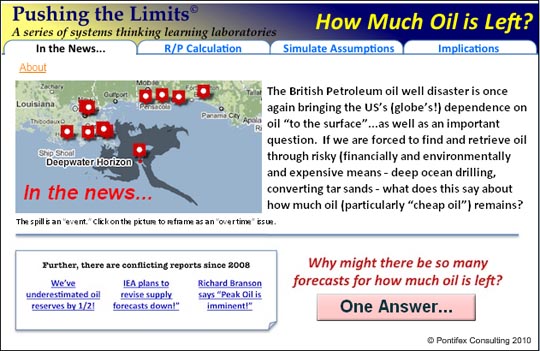Gulf Oil Leak: A Systems Thinking Perspective
Editor’s note: This is a guest post by isee’s consulting & training partner Chris Soderquist
 It’s been a little over 10 weeks since the Deepwater Horizon oil rig explosion that has resulted in a constant flow of oil into the Gulf of Mexico. Oil is now beginning to impact the economy of the Florida coast. Some estimate that the disaster could cost nearly 200,000 tourism jobs. Efforts to remove the impacts on the environment, including a massive rescue of manatees could cost billions. The ability to truly restore the environment to pre-April 20 conditions is beyond that of mere mortals. It is an event truly unprecedented.
It’s been a little over 10 weeks since the Deepwater Horizon oil rig explosion that has resulted in a constant flow of oil into the Gulf of Mexico. Oil is now beginning to impact the economy of the Florida coast. Some estimate that the disaster could cost nearly 200,000 tourism jobs. Efforts to remove the impacts on the environment, including a massive rescue of manatees could cost billions. The ability to truly restore the environment to pre-April 20 conditions is beyond that of mere mortals. It is an event truly unprecedented.
Who’s to Blame?
The current media focus has centered on an activity I refer to as the Find the Knucklehead Game. The idea is that there must be someone out there to blame, tar and feather, and that if we just remove the idiot from the system we’ll never have this problem again. Finé. Complete. Case closed! (And there was great rejoicing…)
However, if we begin to apply the systems thinking paradigm, there’s another analysis that might suggest we are in a long-term trend that is still just ramping up – and that if we don’t take action soon the impact on the economy and environment may be much worse.
A Systems Thinking Perspective
Two of the skills required to practice systems thinking are Dynamic Thinking and 10,000 Meter Thinking. If we look at the history of oil extraction from the balcony, as a long-term trend over time, we see something that may be quite useful. Let’s apply a concept developed by Charles Hall (SUNY-College of Environmental Science and Forestry) called EROI (“energy return on investment”). EROI is the ratio between the energy we receive – to run our transportation system, heat our buildings, run electricity generators – and the amount of energy required to get the raw material out of the ground and process it into usable form. In the early 20th Century, oil was easy to extract. In many places it was just below the surface in the wide open fields. The EROI was 100:1 in 1930 – 100 units of energy received for 1 unit of energy extracting/processing. Since then there has been a marked decline, and as the United States passed peak oil production (the maximum production rate) in the early 1970s, and as we’ve begun importing most of our oil, the EROI for oil in the US is approximately 20:1.

Why the marked decline? Because the purest, easiest to extract/process oil has likely been found and burned (leading to too much in our atmosphere, but that’s another point). We now need to go to more distant places (no longer fields) – offshore, into the Arctic – to find oil. Often the oil is no longer in purest form; converting the “oil goo” from the tar sands in Alberta, Canada is a prime example.
Continuation of a Trend
Using the systems thinking perspective, we may conclude that the “event” of Deepwater Horizon is an inevitable continuation of a trend (that includes the Exxon Valdez). And that the trend is likely to get worse as our need (thirst) for oil increases – which will occur as developing nations continue trying to catch up to the developed world, and as we hope for “economic recovery.”
This leads to several questions in my mind.
- If it’s true that the easiest to extract and process oil has been found and used, what’s this indicate about the risks we’ll incur as it requires increasing effort to get oil in the future? More deepwater drilling? Environmental degradation/damage to get oil like tar sands extracted?
- How much oil really is left – how long will we continue to have this cheap resource?
- Further, if we are facing increasing risks and costs for every unit of oil we acquire, when will that begin to have severe impacts on our economy (as the per unit cost of the stuff we love – iPods, cars, flying to Europe – increases, the profit margins of our globalized corporations will decrease)?
- And when will we decide that we need to develop a way of living that is independent of this resource? To recover from our “addiction to oil.”
How Much Oil Is Left?
I’ve developed and published an isee NetSim model that you may use to explore questions regarding how long the resource will last and the implications of the economy on that length. You may explore it here.
Ultimately, we need to stop the Find the Knucklehead Game and instead recognize that it is we – in the collective sense – that are responsible. Not just for the recent disaster, but the long-term trend and its consequences (including the unintended consequences of climate change). The system is behaving as it is designed. It is up to us to design a different system!
